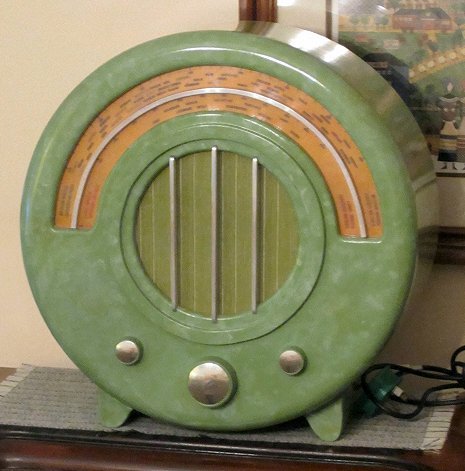
George's Foreign Radios...Last Updated on January 25, 2013 |

|
| Fig 1. - Reproduction Ekco AD65 Radio |
This radio is made of wood, and painted to look like colored bakelite. |

|
| Fig 2. - The label on the back of the set |
|

|
| Fig 3. - The Inside of the R.A.D.65 Radio |
I tried to power up the radio, and it was intermittent and quite insensitive (1 AM station very weak). I decided to open up the radio and take out the chassis. Here are some photos of the insides. |

|
| Fig 4. - The Inside of the R.A.D.65 Radio Cabinet |
|

|
| Fig 5. - The Front of the Chassis |
|

|
| Fig 6. - The Underside of the Chassis |
|

|
| Fig 7. - The Chassis looking down from the Top |
|

|
| Fig 8. - The alignment trimmers on the front of the chassis. |